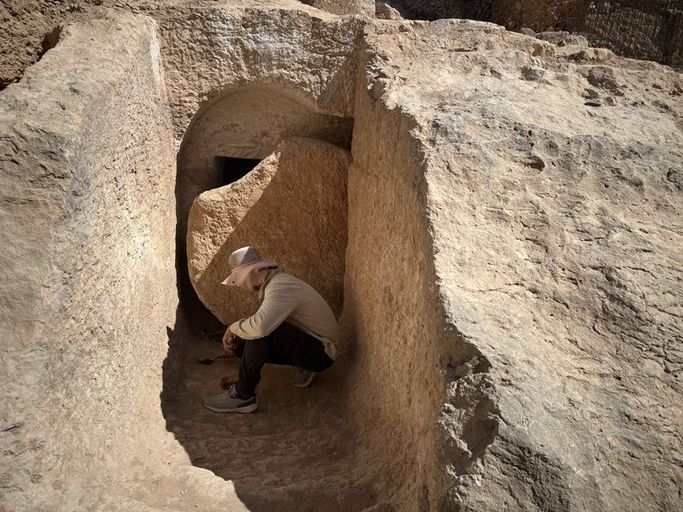Archaeological discovery in Urhoy possibly tomb belonging to Syriac Abgar dynasty
URHOY (Şanlıurfa), Beth Nahrin — A recent archaeological excavation in Urhoy has stirred excitement as early findings suggest an unearthed ancient tomb may be linked to the ancient Syriac Kingdom of Osroene. The discovery raises the possibility of a lost royal burial site belonging to the Abgar dynasty which ruled the kingdom centered around Urhoy (contemporary Şanlıurfa in southeastern Turkey) from the second century BC to mid third century AD
The team of archeologists under Prof. Gülriz Kozbe of Batman University uncovered a rock-cut tomb dating back to Late Antiquity at Dambak Hill on the grounds of Urhoy Castle, just south of the famous Pool of Abraham. Urhoy Castle was built during the Abgarid Dynasty. On the basis of its findings so far, the team beliefs the tomb may date to the third century AD.
According to Anatolian Archeology, the tomb features a circular stone seal at its entrance and a short corridor leading inside. While the doorway remains sealed, external observation reveals typical characteristics of a rock tomb, including carved benches likely used for burials. An undeciphered Syriac inscription was found at the entrance to the tomb which may shed light on the identity of those buried inside and offer insight into the social structure of the period.
The Syriac Kingdom of Oshroene was the world’s first political entity to declare Christianity as its state religion.





















